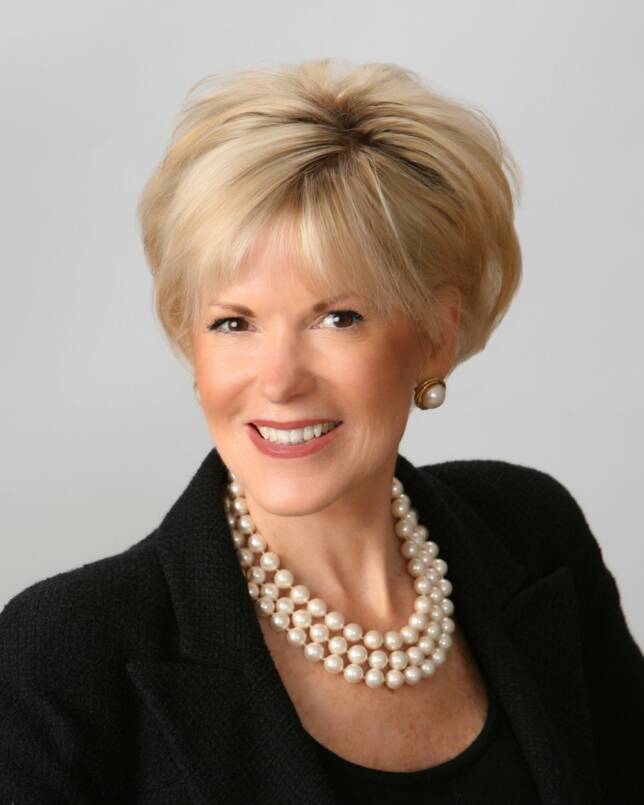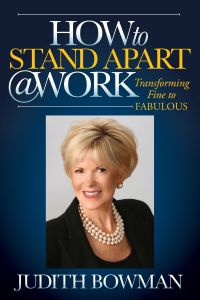Navigating the Zoom Business Meeting
by Judith Bowman on 05/28/20
We have been tossed into a new way of doing business on so many fronts, the biggest of which is probably video conferencing. Whether you use Zoom, Microsoft Teams, Skype for Business, Cisco Webex, Go To Meeting, or any of the other services, the same rules will apply. Please enjoy our featured article this month on navigating this technology.
The face-to-face, time-honored, traditional business meeting remains an integral art of the business landscape today and endures as the singular most effective means of collaborating, connecting, relating and bonding with others. Invasion of the global pandemic has triggered the embrace of virtual channels to support our communications needs and maintain a business presence. As a result, Zoom has soared to prominence. Uncommon attention is now being quite commonly bestowed upon this previously less familiar virtual communication medium which comes with its own set of guidelines governing behavior which interestingly, closely parallels rules president over regular one-on-one business meetings... only on steroids. Simply stated, using Zoom means working harder. Therefore, preparation for a Zoom call should be both tactical and strategic. And remember, Perception IS reality!
While one need not worry about such things as “clammy hands” ... (the kiss of death!) ... accepting gestures of hospitality or “coffee breath” ... one’s very presence on zoom is discerning. Remember, your appearance e.g. the visual aspect - is 55% of your message and includes grooming, attire, backdrop – (real or faux), body language, NRF, gestures, etc., and your voice e.g. the verbal aspect is 38% of your message. This includes words you choose, tone and tonal quality, pausing, the “non words,” isms and more ... Attention to energy, enthusiasm, sincerity and demeanor in cultivating your own personal style should be carefully considered, as should inadvertent displays of boredom, disinterest, pre-occupation, etc., all of which are being piercingly broadcast contemporaneously. The good news is: you can control the information you convey as you preside at your post. Preparation, execution and appearance for your virtual call are essential. When you are well-prepared and equipped to negotiate, ready to counter and respond to any possible objection, glitch or question this is positively noticed and yes, judged. (Interestingly, other countries place much more emphasis on pre-planning for the objective of having only one meeting in order to emerge victoriously. There is much we can learn from our cross-cultural neighbors.)
Staging A Background. Performers do it, broadcasters do it … Presidents of companies and countries do it… Make it your practice to stage a professional background with your audience in mind. Your surroundings are subject to scrutiny and say as much about you as the points you are making. A sterile kitchen backdrop with spartan countertops tells one story while an office or neutral background showing books, awards, trophies, pictures of your children or perhaps a picture your child drew, tells another. Your background provides colleagues with the opportunity to learn some personal information about you while also serving as fodder for small talk – a really inappropriate expression for what should be called “big talk” or really important talk because it is the ice-breaker which helps break the ice and advances conversation to ignite the trust factor – integral to building interpersonal relationships. Decide what personal information you want to broadcast.
Preparation:
- alert others in your household to your call. Ask for their respectful consideration and this will be reciprocated. If babies crying, dogs barking, doors slamming are unavoidable, alert hosts in advance. That said, attention to ring tones, music, etc., are within your control. Be sure to silence these.
- adjust lighting to optimize your visual e.g. position light from either below your face or from the sides. Your face should be eye-level to the camera lens.
- Exude positive energy and have a pleasant, positive, inviting facial demeanor (contagious!) Keep lips slightly apart and UP (use a mirror.)
Onscreen Attire. What you wear speaks volumes about you. Know your audience and dress for this audience knowing they look up to you as the consummate professional in your field. Bright colors, busy patterns, big bangles and dangles (ladies) distract and detract from your message. Neutrals or muted colors are “never wrong” ... Business casual is “fine” versus business professional which is “never wrong.”
Remember: 90% of Success is “Showing Up!” That places a huge emphasis on what you do once you are on this Zoom call. Contribute! Consider your questions and contributions and deliver with confidence. Repeat key questions or comments. Use collective phrasing: “Are we in agreement?”
Top Tips: Treat the lens like a person and look into the camera to make virtual eye-contact, ignite trust and advance relationships. Endeavor to be fully present. Listen and look interested, even if you are not. Practice, use and properly pronounce names. Sit or stand – for the duration. Use an uncomfortable chair which will help you look more alert and professional. Good posture and sitting focused forward toward the camera implies heightened interest level, attentiveness and professionalism. Leaning backward into your big over-stuffed chair casts the appearance of being way too comfortable, relaxed, unprofessional. Hands/forearms - as with the one-on-one meeting: belong quieted on the desk showing that you are aboveboard, trustworthy (not “underhanded.)
Gestures: use selective and neutral gestures when you speak e.g. open palm, two finger wave, thumb over fist, if at all. Refrain from fidgeting, multitasking or over-gesturing. Avoid eating, gum chewing, yawning, touching or resting face on hands, slouching, overt itching/scratching. And remember: regarding any bodily function – including coughing, sneezing, drinking (use a straw ladies!) ... Away!... from the lens.
Hosts: take the lead. Introduce versus announce those present. Individuals should acknowledge themselves as introduced via the two-finger waive, slight head-tile or the “half-stand” to help others make associations. To defer to the next person say: “And now we will hear from Judy Jones. Welcome, Judy. Thank you for joining us today.” Vs. “Over to you, Judy,” or “Take it away!” (tacky.)
*Remember a virtual Happy hour is still a meeting.
In Conclusion
Over 78% of employees now working remotely. There exists a terrific opportunity to lead - in a balanced way e.g. people and profit to meet and exceed expectations. Many companies are finding that they can be virtually effective and, in so doing, eliminate costly office rents, cafeterias, workout facilities and more. Moreover, employees who hone new skills will be seen as true emerging leaders and exceptional. With an almost 30% unemployment rate, competition for coveted jobs has never been more fierce.
Interviewers ideally want to meet candidates face-to-face before hiring, according to Johnny Taylor, Jr., president and CEO of SHRM. This assertion heightens our own mantra that, despite all the amazing high technological advances, “It’s all about people.” Therefore, being “seen” and “well-met” virtually is critical. Zoom is proving itself to be an attractive alternative for hiring and conducting business. Therefore, getting it right the first time cannot be over-stated. It’s not about the technology. It's about People mastering the technology to make organizations run most efficiently. Remember: people run the organization. We can be more impactful and truly help people perform better to make this world better. The future is ours. “Better workplace; better world.” (Ref. SHRM.)
Respectfully yours,
Judith Bowman
Comments (0)







